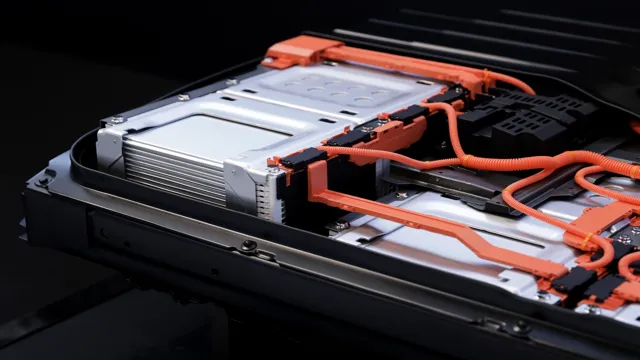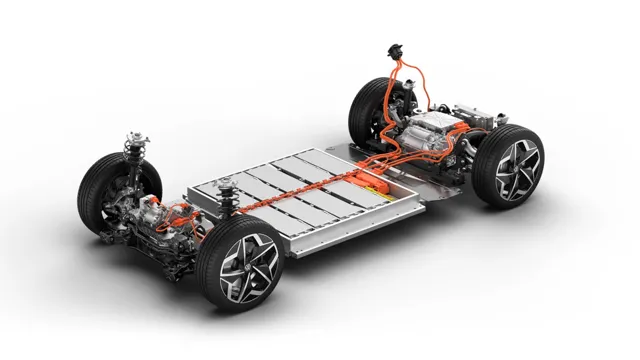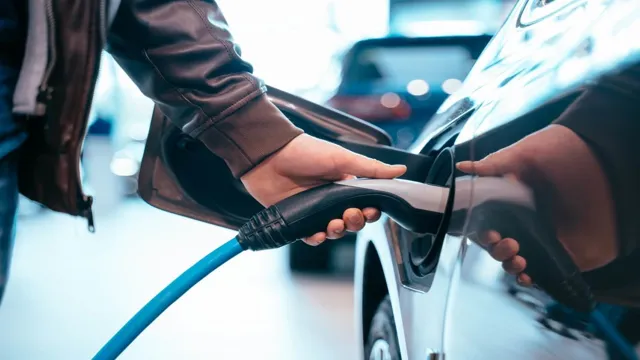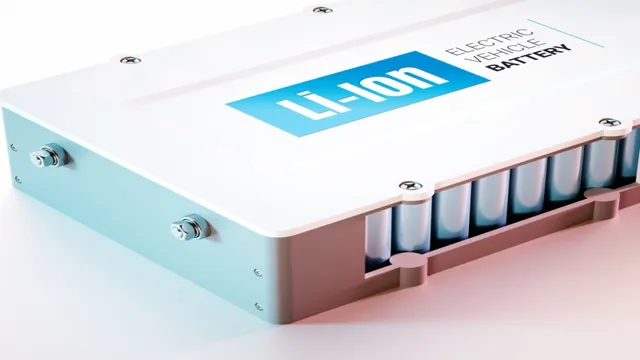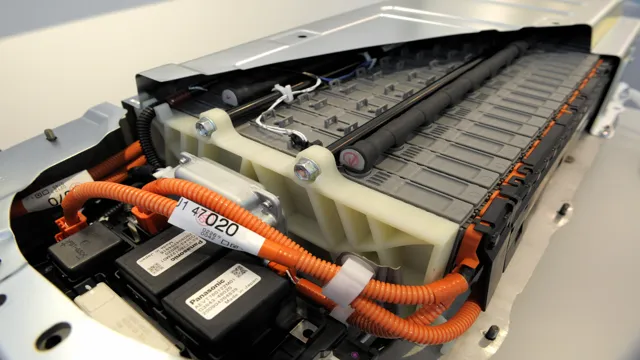Revolutionizing the Future: Electric Car Batteries Transformed for Cleaner and Greener Mobility
Electric cars have been a growing trend in recent years, and it’s no surprise why. As people become more environmentally conscious, they’re turning to vehicles that produce less pollution. However, one common criticism of electric cars is their reliance on lithium-ion batteries, which can be harmful to the environment.
Luckily, researchers and experts have been working hard to improve electric car batteries, making them less toxic and more sustainable. But how exactly are they doing this, and what does it mean for the future of electric cars? One way researchers are improving electric car batteries is by finding alternatives to the toxic materials used in traditional lithium-ion batteries. For example, some researchers are using materials like sodium and potassium instead of cobalt and nickel, which are known to be harmful to the environment.
Additionally, some companies are developing solid-state batteries, which use solid electrolytes instead of liquid ones. These new batteries are not only less toxic, but they’re also more efficient and can hold more energy than traditional lithium-ion batteries. Another way experts are making electric car batteries more sustainable is by finding ways to recycle them.
Currently, many electric car batteries end up in landfills, which can be harmful to the environment. However, scientists are developing new methods to recycle these batteries and extract valuable materials like copper, aluminum, and cobalt. Overall, the push to improve electric car batteries is a promising sign for the future of electric cars.
As more and more people make the switch to electric, it’s important that we prioritize sustainability and reduce our reliance on harmful materials. With the help of researchers and experts, electric car batteries are becoming less toxic and more sustainable, making them a more attractive option for environmentally conscious consumers.
Environmental Benefits
Electric car batteries have significantly improved over the years with an emphasis on being less toxic to the environment. Previously, car batteries were known to release harmful chemicals such as lead into the soil and groundwater, resulting in severe health hazards. With the advancement of technology, electric car batteries are becoming safer and more efficient.
Manufacturers have eliminated toxic materials such as lead and cadmium from their battery production processes, reducing the environmental impact of these batteries. Additionally, these batteries are now almost 100% recyclable, reducing waste and lowering carbon footprints. The electric car industry’s emphasis on sustainability and reducing the use of fossil fuels results in better air quality, less pollution, and ultimately creates a healthier planet.
As more people make the switch to electric cars, the demand for safe and sustainable battery production will continue to increase, which ultimately leads to improvements in the industry, benefiting both the environment and human health.
Less Toxic Materials Used in New Electric Car Battery Designs
There is good news for eco-conscious car buyers: new electric car battery designs are using less toxic materials, which means better environmental benefits. Traditional car batteries contain heavy metals like lead and cadmium, which can be harmful to both human health and the planet. However, new electric car batteries are using non-toxic and renewable materials like lithium and nickel.
Not only are these materials less harmful to the environment, but they are also more efficient and cost-effective in the long run. This means that not only will electric cars help reduce carbon emissions, but they’ll also reduce the amount of harmful chemicals in the waste stream. It’s a win-win situation for everyone involved.
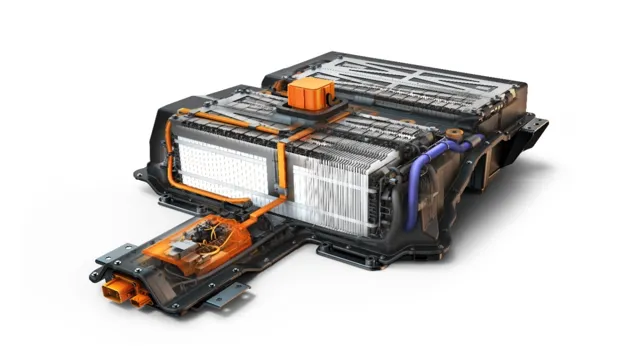
Decreased Lead and Cadmium Emissions from Battery Production
Battery production has traditionally been associated with high levels of lead and cadmium emissions, which can have devastating consequences for the environment. However, recent advancements in battery manufacturing techniques have resulted in substantial reductions in these harmful emissions. This is great news for the environment, as lead and cadmium can cause serious damage to ecosystems and are highly toxic to many organisms.
The reduced emissions are the result of improved processes that require less energy and raw materials, meaning that battery production has a much smaller environmental footprint than it used to. As a result, consumers can enjoy the benefits of longer-lasting batteries without feeling guilty about the environmental impact. It’s clear that the battery industry is moving in the right direction, and we can expect even more exciting developments in the years to come.
Cost and Performance Comparisons
Electric car batteries have been making significant strides in recent years towards being less toxic and more environmentally friendly. Advances in technology have made it possible to improve the performance of electric car batteries, while also reducing their cost. One promising area of improvement has been the use of alternative materials, such as lithium-iron-phosphate, which is less toxic and has a longer lifespan than traditional lithium-ion batteries.
Additionally, manufacturers are exploring ways to streamline the production process and reduce the amount of waste generated during manufacturing. As a result, electric car batteries are becoming more affordable and accessible to consumers around the world. With the continued focus on sustainability and climate change, the demand for electric cars and their batteries is likely to soar in the coming years, as people look for ways to reduce their carbon footprint and protect the planet.
Lower Cost for New Battery Technologies
New battery technologies are emerging all the time, and with them comes the promise of lower costs and improved performance compared to their predecessors. One such technology is the solid-state battery, which is being developed as an alternative to traditional lithium-ion batteries. Solid-state batteries replace the liquid electrolyte found in lithium-ion batteries with a solid electrolyte, making them more energy-dense and safer.
They also have the potential to be cheaper to produce, as they require fewer materials and can be manufactured using existing production lines. Another technology that is promising lower costs is sodium-ion batteries, which use sodium ions instead of lithium ions to store energy. Sodium is cheaper and more abundant than lithium, making sodium-ion batteries more cost-effective.
Researchers are also exploring the use of more sustainable materials, such as organic materials and seawater, to create batteries that are not only cheaper but also better for the environment. As new battery technologies continue to emerge, the cost and performance comparisons will be closely watched to determine which ones will become the new standard.
Improved Battery Life and Charging Time
Battery Life and Charging Time When it comes to smartphones, battery life and charging time are two of the biggest concerns for most users. Smartphones these days are used for much more than just making calls and sending texts. They are used for streaming videos, playing games, browsing the internet, and so much more.
This means that the battery life of a smartphone needs to be able to keep up with the demands of the user. In recent years, there have been significant improvements to both battery life and charging time. Smartphone manufacturers have been able to create batteries that last longer than ever before while also charging much faster.
This has been made possible by advancements in technology and improvements in the manufacturing process. When it comes to cost and performance comparisons, it is important to note that not all smartphones are created equal. Some smartphones may have better battery life than others, while others may charge faster.
Additionally, the cost of a smartphone can vary greatly depending on the brand and the features it offers. Overall, it is important to do your research and choose a smartphone that meets your needs and budget. With the advancements in battery technology, you can now enjoy longer battery life and faster charging times than ever before, but it all depends on which smartphone you choose.
Weight Reduction, Increasing Car Efficiency
When it comes to reducing the weight of a car and increasing its efficiency, there are numerous factors to consider, including cost and performance. While lightweight materials may be more expensive upfront, they can ultimately save money in the long run by improving fuel efficiency. Additionally, reducing the weight of a car can improve its handling and acceleration, making it not only more efficient but also more enjoyable to drive.
However, it’s important to consider the specific needs of the car and driver when deciding which weight reduction tactics to implement. For example, removing certain features or components may save weight but could also negatively impact the car’s performance or functionality. Ultimately, a balanced approach that takes into account both cost and performance considerations is key to achieving the best results when it comes to weight reduction and improving car efficiency.
Future Developments
Electric car batteries are constantly improving, becoming less toxic and more efficient. One of the primary materials used in lithium-ion batteries, cobalt, is highly toxic and expensive, but researchers are working to find alternatives. One innovative solution is to use sodium-ion batteries, which utilize abundant and more affordable materials.
These batteries also have the potential to increase energy density, meaning they can store more energy in a smaller size. Another development is the use of solid-state batteries, which offer higher energy density and a longer lifespan than traditional lithium-ion batteries. This technology is currently being tested and could become available for electric vehicles in the near future.
In addition, companies are working to develop new charging methods that can quickly recharge electric vehicle batteries, making them more convenient to use on long drives. With these advancements, the future of electric car batteries looks bright, and soon we may see a significant increase in electric vehicle adoption.
Increased Research and Development into Sustainable Battery Materials
As our world continues to shift towards cleaner energy and sustainable practices, the development of sustainable battery materials has become an increasingly important area of research and innovation. Future developments in this field hold great promise for more efficient and eco-friendly battery technology. Researchers are exploring new materials such as graphene and lithium-sulfur, which have shown to have the potential to produce batteries that are not only more environmentally friendly but also have higher energy density and longer lifetimes.
With increased investment in research and development, we can look forward to a future where battery technology is not only an essential tool, but a sustainable one that supports the environment, too.
Collaboration between Auto and Battery Manufacturers
Collaboration between Auto and Battery Manufacturers for Future Developments With the rise of electric vehicles, the need for collaboration between auto and battery manufacturers has become more important than ever before. As automakers look to develop new electric vehicles, they must also consider the battery technology that will power them. This is why partnerships between auto and battery manufacturers have become more common in recent years.
In these partnerships, automakers provide insights into what they need from their batteries, while battery manufacturers work to develop the technology that can meet those needs. This collaboration has led to significant advancements in battery technology, including faster charging times and longer ranges. Looking to the future, collaboration will continue to be key as automakers look to develop even more advanced electric vehicles.
There will need to be a focus on improving the durability and efficiency of batteries, as well as reducing the cost of production. Ultimately, collaboration between auto and battery manufacturers will be critical in driving the widespread adoption of electric vehicles. By working together, they can develop the technologies that will make electric vehicles a more viable and attractive option for consumers, ultimately leading to a more sustainable and environmentally friendly future.
Conclusion
In summary, the advancement in electric car battery technology has not only improved their performance and affordability, but it has also significantly reduced their toxicity, making them a more sustainable and eco-friendly alternative to traditional petrol-fueled vehicles. With these advancements, we can drive towards a cleaner and greener future, without leaving a harmful carbon footprint behind.”
FAQs
How have electric car batteries improved over the years?
Electric car batteries have improved in terms of energy density, charging time, and overall performance. Additionally, there has been a shift towards using less toxic materials in the production of batteries.
What are some of the benefits of electric car batteries?
Some of the benefits of electric car batteries include lower emissions, reduced dependence on fossil fuels, and potential cost savings in the long run.
Is it true that electric car batteries are less toxic than traditional car batteries?
Yes, electric car batteries are typically less toxic than traditional car batteries. This is because they often contain materials such as lithium-ion or nickel-metal hydride, which are less harmful to the environment than lead-acid batteries.
How do electric car batteries compare in terms of lifespan and reliability?
Electric car batteries have a lifespan of around 8-10 years, though this can vary depending on usage and other factors. In terms of reliability, most electric car manufacturers offer warranties on their batteries, which can provide peace of mind for drivers.
